

LEARN YACHT DESIGN
Westlawn's mission.
The Westlawn Institute of Marine Technology operates around one central goal:
Enabling our students and alumni to achieve their dreams of becoming successful yacht designers.
Westlawn Opens Doors
Over the years, Westlawn has produced more practicing small-craft designers than any other institution in the world.
Westlawn graduates have established careers throughout the marine industry, with leading builders and design firms. Many have launched their own independent design firms.
The Westlawn Diploma in Naval Architecture, Marine Engineering, and Yacht Design demonstrates the graduate’s mastery of concept and design skills. Equally important to prospective clients and employers, it offers proof of superior self-discipline and dedication, for a powerful competitive advantage in the global marine industry.
Many Westlawn graduates report that their portfolios of design projects from the Westlawn course have been a primary factor in securing employment with leading boatbuilders and design firms. Employers add that Westlawn students’ learning is practical, relevant and up-to-date, allowing them to begin contributing immediately as productive team members.
Many Westlawn students have completed their studies after being hired as designers in many industries.
Who Should Consider Westlawn
Recent high school graduates choose Westlawn as the next step in their education, leading directly to a yacht and boat design career.
College and university students earning degrees in naval architecture and marine engineering find that Westlawn provides skills in boat design not covered in university courses, as well as training in conceptualization and aesthetics.
Many Westlawn students have already established careers in other disciplines, and seek to change their professional direction. Others, already working as designers in the marine industry, select Westlawn as a path to professional development and career enhancement.
So if you have an interest in boats and a desire to flex your creative muscle in marine design, the Westlawn Institute of Marine Technology is for you.
A Westlawn Education Is Effective, Convenient, And Affordable
To help you achieve your professional dreams, we’ve made it easier than ever to complete your Westlawn education.
Your monthly student fee covers your student membership in the two professional organizations that will be very important to your career as a yacht designer: RINA, the Royal Institution of Naval Architects, and SNAME, the Society of Naval Architects and Marine Engineers. These two organizations provide you with periodicals and access to an enormous library of valuable reference materials.
Because tuition and enrollment fees include all text materials, software tools, assignment review and evaluation, testing, grading and consultation with faculty, the cost of a Westlawn education represents a superior value.
Practical, Project Based Learning
Our courses are online, and have always been based on “Project Based Learning” which is widely recognized as the most effective way to learn: As a Westlawn student you will learn knowledge and skills, and immediately apply your skills on practical yacht designs.
Project Based Learning enables you to internalize and retain the knowledge and skills, as you use the tools and processes used in professional yacht design firms.
Select Westlawn students also have the opportunity to collaborate on Superyacht designs at Art Center College of Design, in Pasadena California.
By the time you graduate, your portfolio of professional quality design work will include nine designs of yachts engineered in aluminum, fiberglass, and wood, both sail and power.
This realistic and practical education means you will have the confident ability to design yachts for clients upon graduation.
The Yacht Design and Naval Architecture Course
A comprehensive four-module professional education, the Westlawn Yacht Design & Naval Architecture course enables you to master the principles of yacht design using industry standard tools, including Rhino3d and AutoCAD.
During this course, you will prepare plans, computations, specifications and all the details for nine different boat designs. You will design both powerboats and sailboats. You will follow the practices of successful yacht design firms.
Your nine different designs will be critiqued by the Westlawn faculty of professional yacht designers, and will provide you with a portfolio of your own designs to help you start your career.
Module 1: Principles of Yacht Design
Introduction to design process; Fundamentals of statics and dynamics and their influence on design.
Module 2: Aesthetics and Layouts
Elements of exterior and interior design of powerboats, monohull sailboats and multihulls, using Rhino and Autodesk tools such as AutoCAD.
Module 3: Construction Methods
A detailed study of manufacturing technologies, materials and processes for wood, fiberglass and aluminum production.
Module 4: Systems and Equipment
Design considerations and issues relating to engine installations, propulsion, electrical, navigation, plumbing, fuel and environmental systems.
When you satisfactorily complete all four modules, you will graduate and be awarded the Diploma in Yacht Design, Naval Architecture, and Marine Engineering.
Admission Requirements
The Yacht Design & Naval Architecture course is a comprehensive and rigorous course. You should be prepared and mature enough for a college education. There are no specific prerequisites, other than self motivation and discipline.
You need a Mac or PC with internet access and email to enroll and to do the coursework.
Work at your own pace
You may start the Westlawn course at any time.
The entire Yacht Design & Naval Architecture course requires about 3,200 hours of study and assignment preparation, or about 1 to 3 hours a day to complete the course in 4 years.
Westlawn is a work-at-your-own-pace school. Some complete in as little as two years, others may take a decade. It is common for our students to obtain gainful employment as designers of yachts, cars, airplanes, products, and interiors early in their education at Westlawn.
Tuition and Fees
$4600 per module for tuition, and $100 enrollment fee per month. Therefore, the total 4 module course will cost about $23,200 if completed in 4 years.
Everything is Included
Your tuition and enrollment fees includes all books and full versions of all software from Autodesk, including AutoCAD, Alias, Maya, Inventor. Deep discounts on Rhino and Orca3d are also available to our students.
Making waves for 90 years
Since 1930, Westlawn has set the standard for yacht design education. Over the years, our alumni continue to lead the marine industry in setting the tone for style throughout the industry, including sailing and power yachts and commercial vessels.
For example, alumnus Jack Hargrave gave us the now pervasive style of sport fishing boats with long fordecks and wide and low cockpits.
Alumni Andrej Justin, Tom Fexas, Bruce King, Gerry Douglas, Roger Martin, Dudley Dix, John Swarbrick, Doug Zurn, Rod Johnstone, and many others have designed large numbers of beautiful and influencial custom and production yachts including many America’s Cup racers.
Eos, the 320’ three masted schooner built by Lurssen, was designed by Westlawn graduate and Senior Partner of Langan Design, Antonio Ferrer.
Recent graduates include Adam Voorhees, Superyacht design award winner, and Adriana Monk, a Chief Designer for Wally Yachts of Monaco.
What Alumni Have to Say about Westlawn
It was a wonderful day for me personally to be able to present a second diploma to a Westlawn graduate since taking over the Hargrave company. I want to thank Westlawn for making all this possible not only for Greg Boyko, but for the entire Hargrave family. We take great pride in our company’s long history with Westlawn, and the list of honored recipients to receive a Westlawn diploma who not only played an important role in our company, but in the yachting industry overall is impressive indeed. Keep up the great work!
. . . I am currently a NAMS surveyor in Annapolis and have had my own successful business for over 16 years. I have been employed by two yacht yards and the US Navy. I spent three years on the drawing board primarily working for the Navy but doing some independent smaller design projects. In the last 20 years I have traveled to 40 countries surveying all manner of vessels from ocean going tugs and floating dry docks to yachts and high speed patrol boats. Many thanks for helping me establish a rewarding and wonderful career.
I am a Westlawn grad who has worked in the industry for over 17 years and am now presently holding the position of Sr. Development Engineer at Pursuit Boats (a division of S2 Yachts, Inc.). I have had several colleagues of mine inquire about the Westlawn program and I am always eager to provide a wonderful appraisal of my studies at Westlawn. It was exciting when ABYC decided to adopt the course and I was also pleased to hear that Norman Nudelman was once again part of the faculty. Keep up the good work and good luck with your future endeavors.
For those of us whose school notebooks were embroidered with boat sketches, the practice of yacht design is just being paid for doing what we like best. Training, such as the Westlawn course, is essential to make this possible. It did this for me.
If you are the kind of person that seeks rewards beyond the monetary boundaries, there is nothing so gratifying as seeing your design take shape and finally sail away. The Westlawn School of Yacht Design course can extract those talents from our creative genes.
I recommend Westlawn to anyone desiring to become a yacht designer or commercial boat designer.
. . . the quality of its graduates, including Bruce King, Bill Shaw, and Ted Brewer remains a constant.
Westlawn is a 501(c)3 non-profit public charity. Therefore, all revenues and funds are used only for the education of Westlawn students. Over the past 90 years, Westlawn has educated thousands of practicing yacht designers. Westlawn provides students with all books and software tools required to complete the course.
| | | | ||
: : Schools: Subcategories: | ||
| ||
| | | | | | | | | | | | | | | | | | | | | | | | | | | | | | | | | | | | | | | | | | | | | | | | | | | | | | | | | | | | | | | | (583) (33) (37) (80) (49) |
 
 Empower your career where the tools of creativity set sail Milan Yacht Design offers yacht designing courseWe brought the sea in the heart of milan. A new thriving Design Center Institute, where the style and vibe of the City dives into the lines of Superyachts, tremendous combination of technology and form. You'll work with experienced multiple awarded industry professionals with fifty years of experience, and have access to state-of-the-art equipment and technology. Join our yacht design courses and learn the skills needed to design and create some of the most luxurious and innovative yachts on the market. Our program covers everything from basic design principles to advanced computer-aided design techniques. 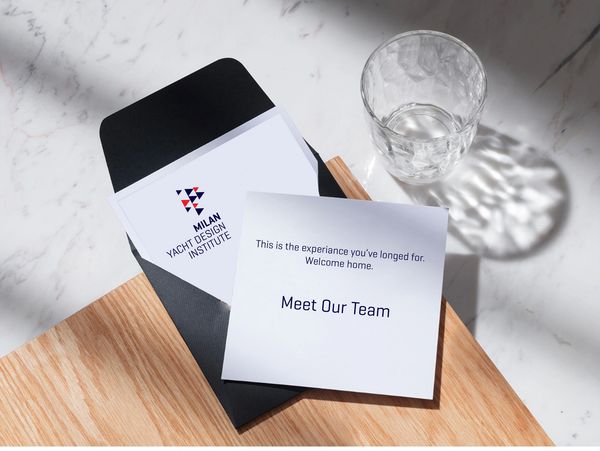 Our Webinar it’s almost here!The date is approaching fast and we’re making preparations. Don’t miss out! Mins Minutes Secs Seconds This short four-hours Workshop is an introductory program. It is designed for beginners and covers the basics of yacht design, through real-world examples, having access to multiple awarded Industry leaders. Our lecturers experience ranges in every single aspect of a project. The conventional representation, the creation and calculation, the study of materials and construction systems of hulls and superstructures, and for interior furnishings. The plant engineering and the choice of propulsion systems too. Always with an eye to proportions, innovation and elegant lines without exceeding in awe design... All that with that extra something that has made the “Made in Italy” yachts famous throughout the world. A history that comes from a distant past and is inherent in the DNA of Italian designers. Copyright © 2023 Milan Yacht Design Institute S.r.l. - All Rights Reserved.
This website uses cookies.We use cookies to analyze website traffic and optimize your website experience. By accepting our use of cookies, your data will be aggregated with all other user data.  Yacht Design
It may seem counterintuitive, but design constraints usually help drive creativity . In this course students will look at one of the most constrained areas of design: the layout and construction of a yacht. Yacht Design for Middle and High SchoolersThis course is led by a seasoned designer who has spent many years designing and overseeing the construction of luxury yachts. Along the way we will learn how practical requirements—like staying afloat!—drive the design process of boats. We’ll interrogate that process itself and learn how yacht design has evolved in recent years driven my new materials and new lifestyles. We’ll learn how to sketch out our ideas—by hand and on computer—and test them against real-world constraints. This course is designed for students in middle school or high school who have a strong interest in design, live on boats, or are simply intrigued by boat design. Since it is led one-to-one, it is open to any student, and will be adjusted according to your background in design. Yacht Design CourseYacht design is a niche, with only a handful of well-known names producing some spectacular designs. The interiors, exteriors, and all systems in a boat are designed to be practical, forced by constraints like lack of space, the marine environment, and the need to incorporate aspects of a vehicle (engine, etc.), a resort (dinghies and other smaller vessels) and house into a single, unified unit. Whether it is a working vessel, luxury yacht, or a family’s floating home, design at sea has to tightly fitted and ergonomic. Boat builders and yacht designers strive to fit many things into very small spaces, which calls for good problem-solving skills and excellent lateral thinking. Yet, there is a fine balance between the two needed to still make it look good. There has been a large movement to a nomadic lifestyle, especially living on board a yacht as your primary home, so understanding the thought processes and design decisions that go into the build is very important. During this course we will learn about the different styles and types of boats, the build and design process from start to finish, and understand the basics for what needs to be onboard a boat in order to make it livable and safe. We will look at the basics of design and the principals that can be applied when designing interiors of yachts and how yacht design has progressed over the years. Core Concepts in our Yacht Design CourseDuring our time together you can expect to cover the following topics and skills:
Personalized Learning At the end of this one-to-one, personalized course you will have a strong foundation for doing more advanced work in design, generally, such as our architecture course or animation course .  View All CoursesInquire about this course, inquire about adult learning, match me with a teacher, contact teacher.


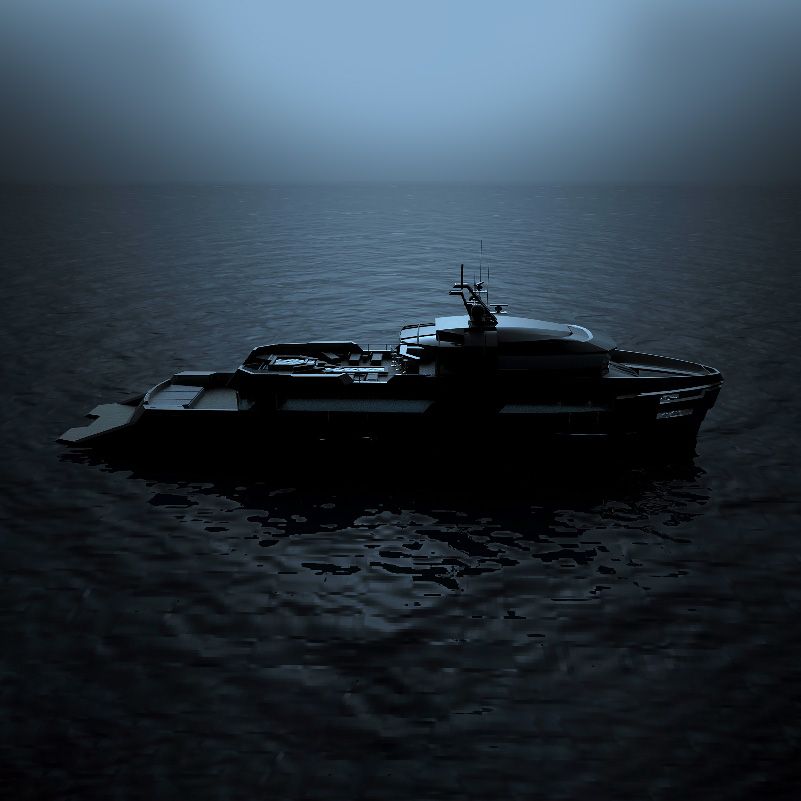
Yacht DesignThe Specializing Master in Yacht Design to become experts in the design of boats for the pleasure boating sector. The Master in Yacht Design of the Politecnico of Milan provides students with the tools needed to manage the design and construction process of both a sailing boat and a motorboat, from the design brief to defining the general plans , to the hydrostatic and hydrodynamic calculations to the interior fittings, of the roof and on-board equipment, to shipyard production and checking the final phases. On the one hand it collects and consolidates opportunities and resources developed by the University, with particular reference to skills in the fields of industrial design, fluid dynamics, mechanics, materials science, on the other hand it uses resources, experience and expertise acquired at a number of other Italian universities including: University “Federico II” of Naples, University of Catania and University of Chieti.
The Head of the Specializing Master is prof. Andrea Ratti, the Deputy manager is prof. Arianna Bionda. The Commission is made up by professors of Politecnico di Milano: Andrea Ratti, Arianna Bionda, Silvia Piardi and Matteo Ingaramo; by prof. Massimo Musio Sale of the Genova University, by prof. Andrea Vallicelli of the Chieti University and by prof. Carlo Bertorello of the Federico II University of Napoli.  XVIII editionTestimonials, interview with elisabetta pianta, interview with marco foti. On the occasion of the 20th birthday of the Specializing Master in Yacht Design, we interviewed 20 alumni of the first MYD editions who have distinguished themselves in the world yachting scene. Here is our interview with Marco Foti , student of the III edition of the Specializing Master and today Project & Sales Manager of the Yacht division of the Sanlorenzo shipyard with headquarters in Ameglia (SP) and Viareggio . Discover his path! 1. Can you tell us “who you are”, what do you do today and what role within the company / reality where you work? My name is Marco Foti, I’m Project & Sales Manager of the Yacht division of Sanlorenzo shipyard, based in Ameglia (SP) and Viareggio. I deal both with sales to direct customers and through dealers, with particular reference to the Middle East, Greece, Russia, Balkans and UK areas. My role as “technical sales” Project Manager also includes the management of customizations and technical configurations of our yachts (Sanlorenzo builds only full “custom” yachts) organizing meetings with customers, delivery and cost control of the order. 2. What was the role of training, and in particular of the Specializing Master in Yacht Design at the Politecnico di Milano, to get to where you are today? I took part in the MYD of the Polytechnic of Milan in 2004, immediately after my five-year degree in Mechanical Engineering, at Politecnico di Milano, that I graduated in December 2003. Being born and raised in Sicily, 50m from the sea in front of the wonderful Aeolian Islands, since I was a child boats have always been my passion, thanks also to my father, and I grew up with the desire to turn it into my dream job. The MYD has been for me the perfect link between the university environment and the world of work in this field, very challenging but equally rewarding and satisfying. All the notions I learned at MYD have been extremely useful since the very first day of my internship at the Sessa Marine shipyard in Bergamo, which I begun in the second half of 2004. From then on it has always been a crescendo of experiences, learning and, with great commitment and dedication, great personal gratification. 3. An important moment or a memory from your experience at the Specializing Master? Concerning “important moments”, all the experiences in the classroom and in the shipyard with the various “top players” of the nautical world such as Vallicelli, Felci, Musio Sale, Bertorello, Ivana Porfiri, Wally Yacht remain indelible in my memory. The funniest anecdote: in that year the MYD class was composed of practically all “sailors”, while the only “motorists” were, in addition to myself, Francesca Darmian, Chiara Grugni and Eleonora Berneri. It was therefore extremely easy and immediate to form our working “team” nicknamed, to be precise, “the Engineers”, with whom we then carried out the MYD thesis project of a very sporty 60 knot boat…obviously with three engines! 4. The first word that comes to mind when thinking about the Specializing Master . SPRINGBOARD. 5. What advice would you give to a young person who dreams of becoming a yacht designer / undertaking this training course? I may be against the tide, but the first piece of advice I would give is “extracurricular”: try to get involved in the sea! Anyhow, even with a small dinghy of two and a half meters, or a gozzetto rowing or a small sailboat: the “life on board” is absolutely the best “theory” that you can have and that will always carry you when it is time to design any detail of a boat, whether technical or aesthetic. In addition to this, the great strength of MYD is that, unlike the classic university faculties (e.g. naval engineering) where the activity is decidedly unbalanced on the theory side, here we deal much more with the “practical” part, thanks to the direct B2B interaction with great professionals of the nautical sector that, in Italy, has no equal in the world. Interview with Alan De CandiziisInterview with valentina speciale, interview with marijana radovic. On the occasion of the 20th birthday of the Specializing Master in Yacht Design , we interviewed 20 alumni of the first MYD editions who have distinguished themselves in the world yachting scene. Here is our interview with Marijana Radovic student of the III edition of the Specializing Master and today Co-founder / m2atelier. 1. Can you tell us “who you are”, what do you do today and with what role within the company / reality where you work? It takes a life to answer that question. I can tell you for sure that Marijana Radovic is a designer, architect, mum, wife, daughter, sister and a friend to many of my dear friends. My first professional choices started in Serbia and my career enfolded in Milan after precious experience in many other locations Rome, Geneva, Athens, London. From my Master onwards I have been always involved in Yachts Design and more. Thanks to diverse environments and significant experiences in the field, I mastered project management, which allowed me to oversee the projects at 360 degrees. In 2006 I founded a design studio STANDBY, initially based in Belgrade and Athens; then soon after, in 2009, I moved back to Milan, which I identified as a perfect location to continue my yacht design journey and research in the field, along with the residential and other architectural projects. Together with architect Marco Bonelli, I founded the international architecture studio m2atelier based in Milan, which has the essence in a multidisciplinary approach and continuous research of space potential, proportions, and materials, with an eye for details that distinguish our design. 2. What was the role of training, and in particular of the Master in Yacht Design of the Politecnico di Milano, to be where you are today? It was fundamental. The architectural background was a good base; however, I entered the Yachting world during this master. I learned a lot since the course was quite intense, and at the same time, it opened the doors to important studios, and from there, the rest was on me. 3. An important moment or an anecdote from your experience at the Master. I loved everything about the Master. I was also lucky to meet people who remained my friends. I remember very well that I was the first foreign student in the class, and that was when the Master was entirely in Italian. During the day, I studied and attended the classes, and my nights were dedicated to my 3 dictionaries that helped me follow the courses. I had to be 8 hours constantly focused on hearing and understanding the professors lecturing in Italian otherwise I risked of missing the whole lecture. After 3 days of studies, the professor asked me if I understood everything, and I answered, “yes” (which was maybe my mistake:). From then, no one ever asked me the same thing again assuming that I understood everything, so I had to move forward with intense learning of Italian language, along with Italian nautical language and the courses. That hard work paid off, and I am very satisfied today with what I had then accomplished in just one year. 4 . The first word that comes to your mind when thinking about the Master. Experience. Working on projects that were real challenges. My colleagues. And the way I lived my life during the studies. All felt and became my new family. We spent time together working a lot and also travelling a lot which was organized by Politecnico. 5. What suggestion would you give to a young person who dreams of becoming a yacht designer / undertaking this training course? Master studies are the best way to gain knowledge and dive into the nautical world in a short intense period. I warmly recommend the Politecnico Master in Yacht Design to all people dreaming of becoming a yacht designer. Yihharn LiuSara PitoniDuring my internship, I had the honor to work, with my tutor, on Riva projects for the feasibility of some interior spaces and for crew accommodation plan according to with Register rules. My principal tasks during this stage are the revision of general plans and modify interior layouts. I studied the synergy between the structures, systems and interior furniture, which certainly contributed to greatly enrich my cultural baggage, having the possibility to participate in meetings between the technical office and suppliers too. Having an Architecture background got during my five years at the Master degree, it wasn’t so easy to start in this field, but thanks to this Master I had the opportunity to come in touch with this company and get the basic know-how to undertake this journey. Special thanks to my tutor and some nice colleagues that taught me a lot about furniture components, structures, systems and all the design process necessary to reach the goal. Federico GerbinoFrom the very first day, I was thrown into the production area with the task of monitoring the feasibility of the interior and exterior arrangement on board aiming to achieve the goals the CRN had established with the customers. With my tutor, the industrial engineering specialist, I am actually working all day on board of every boat the shipyard is building. I can’t spoil you anything, but each of them is a real masterpiece! MYD has provided me with the right technical and soft skills that have allowed me to understand the problems related to the project that we have on board, I also learned how to operate within this new context, how to share information within a team and I also developed the ability to deal with issues under the pressure of deadlines set. Working in a shipyard like CRN has shown me and it has given me the right tools to build a full custom yacht. Here, I have the opportunity to improve my technical knowledge, my problem-solving skills and, by working on board, I had the possibility to cooperate with every supplier and to better understand how the interior space should be designed, considering both aesthetics and feasibility. During this fundamental period, I’m learning to solve smaller issues finding quickly an effective solution if something goes wrong during the construction. Chrysa VlachouI am part of the design team and am involved in several projects currently developed by the studio. Familiarization with programs like Maxsurf, Rhino, Autocad and focus on specific steps of the yacht design process are some of the skills I developed during the master which are helping me being effective in my daily work. Being a member of a small design studio gives me the opportunity to follow up with various steps and have a better overview of the whole design process, from concept design stage till finalizing the technical drawings for the shipyard. Nikol Naz LebbinkDuring my internship experience, I have been working on the new Maori yacht 54ft Hardtop version inter or layout. While working on this project I was able to use the theoretical knowledge MYD gave me and to combining it with the Marketing needs of the work life. Besides this, customization has also a really big role in this studio. So, new layout arrangements, additional details or material changes are done according to the customers need and taste. The opportunity to analyze the theoretical information and to apply them in the real work, the representation of different ideas and design and the visits in the shipyard to supervise the production process, helped me a lot during the internship to follow and understand how a shipyard workflow is organized. Training objectivesThe Programme provides the tools to manage the design and construction of a sailing and motor boat , from the project brief to define the general plans, to the hydrostatic and hydrodynamic calculations, to the interior design, the deck and the on-board equipment, additional devices, to the production in the shipyard and check of the operation steps. Participation in the Master Course offers the achievement of the following educational objectives:
Didactic ModulesThe educational programme will be as follows:
Title ReleasedAt the end of the course, upon passing the final exam, the first level Specializing Master’s degree of the Politecnico di Milano will be awarded in ” Yacht Design”, with the related achievement of 60 CFU/ECTS. Employment OpportunitiesThe need of training in nautical sector is based on fast and exponential growth shown by this sector in last years. This growth finds an additional attractive factor given by the new provisions that facilitate the development of this market (from simplification of procedures for construction of harbours, to tax reduction for pleasure boats above 10 metres, etc.). For this reason, the sector currently shows a strong professional vocation, both on the side of skills necessary to design pleasure boats, as well as its components and accessories, and on the side of management of the different stages of production process. In particular, this sector is going through a period of strong growth and development in quantitative and economic terms, which have not yet reached their highest level. This delay is also given by the current lack of figures able to manage and guide this change. For this reason, candidates who attend the master’s programme find job opportunities at nautical design studios or at shipyards and companies from the nautical sector . The possible areas of professional involvement are: technical office; engineering; project management; production control; quality check; equipment design; styiling; customization; after sales. RequirementsThe Specializing Master is for candidates with a Laurea (equivalent to Bachelor of Science) or Laurea Magistrale/Specialistica (equivalent to Master of Science) of New Educational System in Architecture, Industrial Design, Engineering or Economics. For foreign applicants, equivalent academic qualifications will be considered in the related study systems. The selection is made by the Commission. Selection interviews:
To take part to the selection process , the application form must be completed online within the following deadlines:
The Specializing Master costs €14.500 , to be paid as below: • € 500.00 – registration fee to Politecnico di Milano, • € 14,000.00 – participation fee. FAMILY SUPPORT: -50% A chance to gift your siblings the encouragement they need to invest in their future. POLI.NETWORK: -50% A promotion designed to strengthen the bond and identity among members of the Politecnico di Milano community. Current editionAwards 2019.  Interior design concept WinnerSteamring for Dada Doga Naz Cebeci MYD14 Concept over 70m WinnerEsquel by Timur Bozca for Oceanco Timur Bozca MYD12 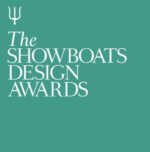 Winner Young Designer of the Year 2019by Boat International Yihharn Liu – MYD15 Awards 2018 Bronze A’ Design Award Winner for Yacht and Marine Vessels Design Category in 2018Sapphire 43m Fast Planing Hybrid Motor Yacht di Matthias Krenz Winner Young Designer of the Year 2018by Boat International Nicolò Piredda – MYD16 3° place Young Designer of the Year 2018by Boat International Francesco Conte – MYD 16 Special Mention Millennium Yacht Design AwardOrfeo Yacht Design team [Francesco M. Conte, Gildo incitti, Adeline Lagaria, Luca Scarsella]- MYD 16  European Product Design Award 2018Bronze in Transportation/Nautical/Boats award Sena Jinen Osman– MYD15 Awards 2017 Young Designer of the Year Award 2017Comète di Thibaud Le Merdy Product Design Award 2017Plantinun Prize in Transportation/Nautical/Boats award Alejandro Crespo Daroca – MYD15 Awards 2016 ADI Design Index 2016Scarliga Merlüss, curated by the students of MYD XII  1° Classified Millennium Yacht Design AwardGuido Valtorta, MYD XII  1° Classified DiporthesisALES by H.J. Choi, A. Ors, M. Schaefer and D. Agapitou, MYD XV  Awards 20152° classified yacht design talent award by heesen. Banu Hunler, MYD XIV Awards 2014 Winner of the Young Designer of the Year Award by OceancoTimur Bozca, MYD XII  XXIII Compasso d’Oro ADI – Targa GiovaniEl Niño skiff by Matteo Costa ADI Design Index Awards 2013Project selected for adi design index 2013. Scarliga Merlüss of the MYD XXII edition Awards 2012 2° classified Lotus prizeZero Gravity by Aldo Bruno and Angela Petitto Partial Exemptions of 25% – Specializing Master in Yacht Design6 October 2024 There are 3 partial exemptions of 25% available to be applied to the participation fee for the Specializing Master in Yacht Design at the Politecnico di Milano, 2025/2026. How to apply The request for partial exemption must be formalised by email to the following address: [email protected] . The application and assignment of partial exemptions takes place during the process of admission to the Specializing Master, and never after its starting date. The partial exemptions can only be used by those who make an application for selection and participation in the Specializing Master in Yacht Design at the Politecnico di Milano 2025/2026. Award criteria The partial exemptions are assigned according to criteria based on merit and on the basis of the requirements of Art. 5 of the Rectoral Decree of approval of the Specializing Master. In evaluating candidates and assigning partial exemptions, the Specializing Master Board will consider: – CVs and Professional Experience (15% weighting); – Interpersonal skills (20% weighting); – Relevance of personal interests to the themes of the Specializing Master (25% weighting); – Expectations and motivational aspects (40% weighting). The minimum score to apply for partial exemptions is 380 on a scale of 100 to 500 points. List of the documentation to be presented to the application for admission to the selection process LINK
The partial exemptions cannot be combined with other exemptions, scholarships or attendance concessions provided by both POLI.design and other bodies, companies, institutions, associations etc. The partial exemptions will be assigned to the first 3 candidates in the ranking according to the requirements indicated above. The deadline for requesting partial exemptions is 06/10/2024 at 23:59 (Italian time). Only those who are eligible for partial exemptions will receive a written communication from POLI.design within 18/10/2024. Within two days candidates who have received communication must send a free form statement of acceptance of the partial exemption to the address [email protected] and proceed with the formalisation of registration, or risk loss of the same and replacement by the candidate or candidates immediately following in the ranking. The registration is formalised with the payment of the first instalment to POLI.design and with the signing of the private agreement within 25/10/2024 The opportunity is valid until 06/10/2024. POLI.design reserves the right not to assign all the partial exemptions available in the event that, at the discretion of the Specializing Master’s administration, no candidates appear who meet the indicated requirements. All partial exemptions may be subject to change without notice. For any questions, please contact the Training Office: Tel. +39 0223995911 | [email protected] Milan, 12/06/2024 DOWNLOAD PDF ScholarshipsRequest information about: master "yacht design", you are buying the master "yacht design"., are you a private person or a company, request information, newsletter signup.  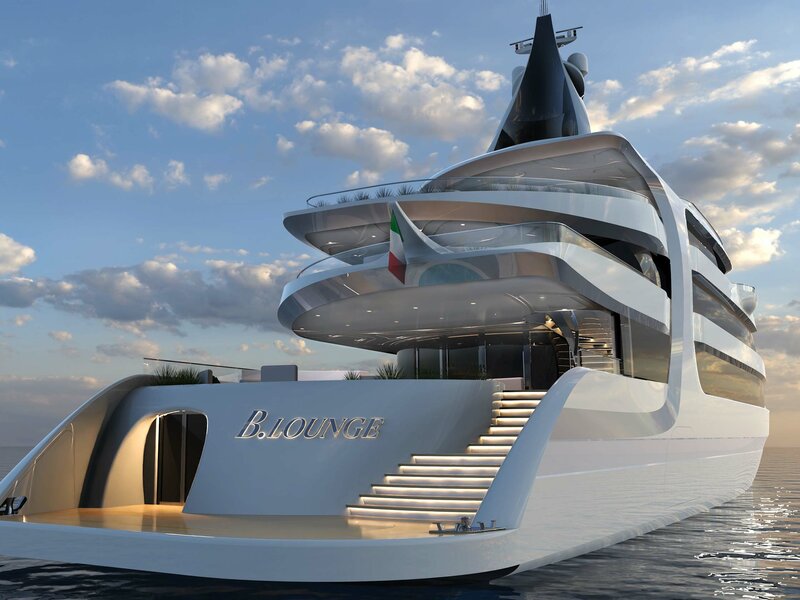 Yacht DesignNovember 2024 20.100 € Find out the current facilitations The Master in Yacht Design offers the ideal educational path to become a Yacht Designer The Master in Yacht Design offers the ideal educational path to become a Yacht Designer, by giving the necessary skills to deal with every stage of the design process – from the initial research and development of the concept to the actual construction of the interiors and exteriors and the validation of production processes in the boatyard. In recent years, the nautical sector has expanded constantly, confirming its role as one of the drivers of Made in Italy design. Furthermore, and the new classic approach, based on naval architecture, is taking on an automotive oriented edge, which introduces new working standards and technical and style solutions borrowed from car design. The vocation of the Piemonte area, which boasts a number of style centres and renowned companies in the land and sea transport sectors, as well as one of the world’s largest shipyards, combined with the short distance from the coast of Liguria, makes Turin the natural setting for a training course founded on the growing process of osmosis that links the yacht world and the automotive industry. Information to decideMethodology and structure. The course is planned in levels, which begin with providing students with essential knowledge of the nautical sector, in terms of both cultural aspects and basic techniques. From there, students gradually acquire the skills connected with yacht design. Starting from a study of the history and current scenarios of the nautical sector, students will go on to study the market and obtain more detail knowledge of the different types of boats. They acquire significant knowledge of materials, technologies and production methods, including through hands-on experience in a shipyard. They are provided with technical drawing and design tools, as well. A further strength of this Master course is the fact that is delivered on two campuses, Turin and Venice. This offers participants a dual scenario, in which both cities represent an important aspect of the themes the course is focused on: the tradition of the automotive industry on the one hand, and the maritime vocation on the other. The training course ends with a Thesis Project, developed on a brief given by a boatyard or a design studio. Who is it for?The admission of the Master is open to graduates in Architecture, Engineering and in the field of Design (Transportation, Interior, Product), as well as professionals in the sector seeking to apply their skills in this specific area.  Federica Bertolini Style Manager - Azimut Yachts Thesis Supervisor Course Coordinator 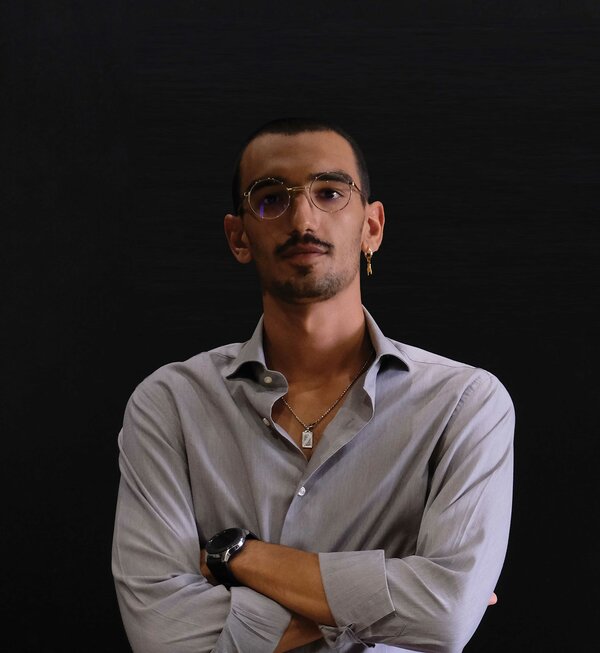 Lorenzo Ciuffatelli Transportation Designer - Pinifarina 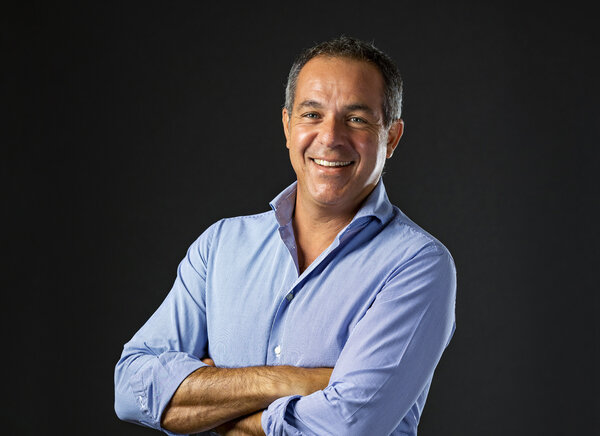 Andrea Sculati Founder and Director - Sculati & Partners  Luca Sordelli Marketing and Communication Manager - Harken Italy, Journalist - Wired, Barche, Nautech  Nicola Scopelliti Freelance Yacht Designer & Co-founder - Scopelliti Rasia Architetti  Lorenzo Penato  Camilla Pierucci Naval and Nautical designer 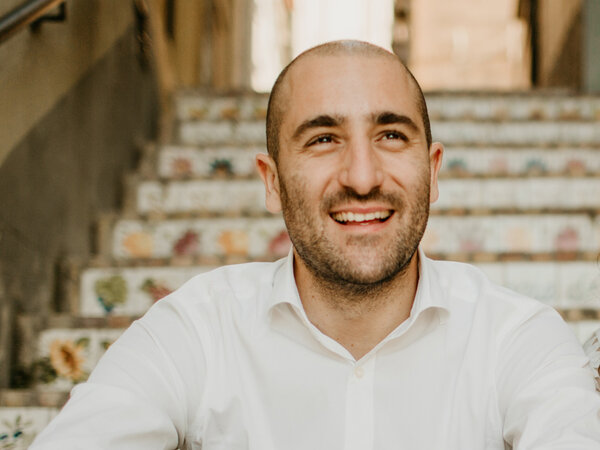 Stefano D'Adamo Style Coordinator - Azimut Yachts  Roberto Tarozzo Engineering Office Manager / Project Manager - Azimut-Benetti 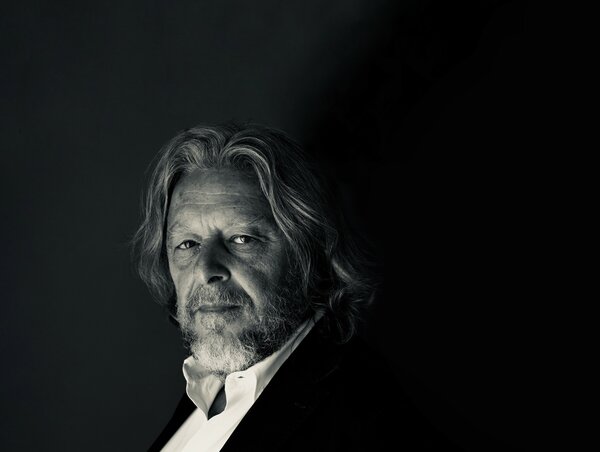 Sergio Cutolo Founder and Owner - Hydro Tec  Alessandra De Luca Training & Development Manager - Azimut-Benetti  Umberto Maria Fossati Founder and Director - Fossati design Bureau Website LinkedIn  88 Dragon - Sport Fly You may be interested in: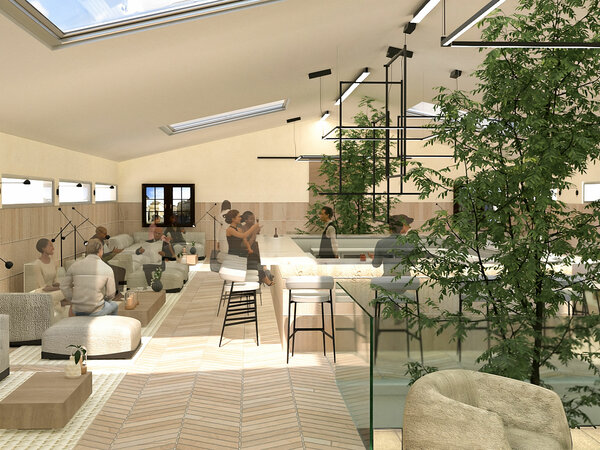 Interior and Spatial design Interior Design 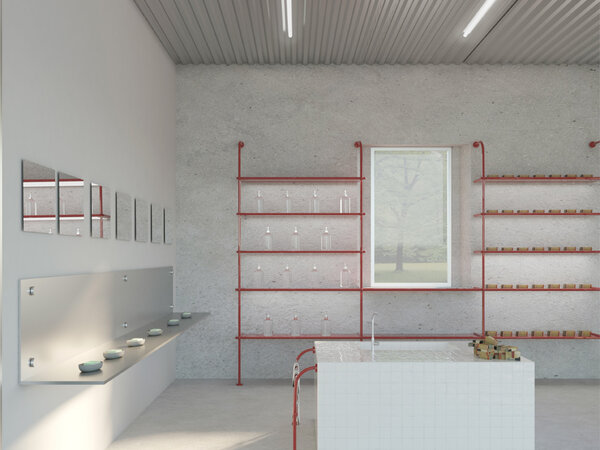 Transportation Design and Mobility Transportation Design  Interior and Furniture Design  Interior and Spatial design, Product and Service Design Italian Interior and Furniture Design Academic Year 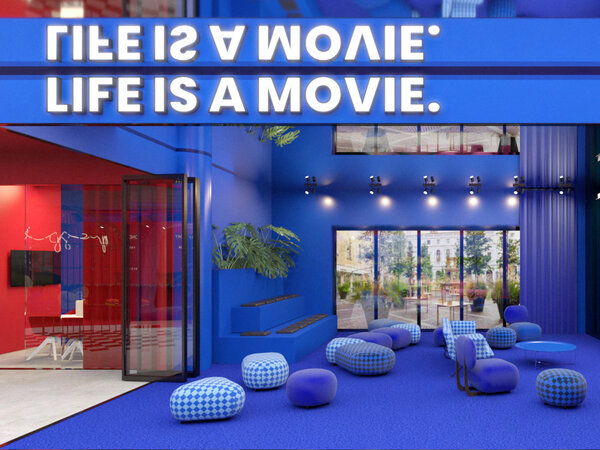 Interior Design – Focus on Retail and Commercial Spaces – Fall Semester 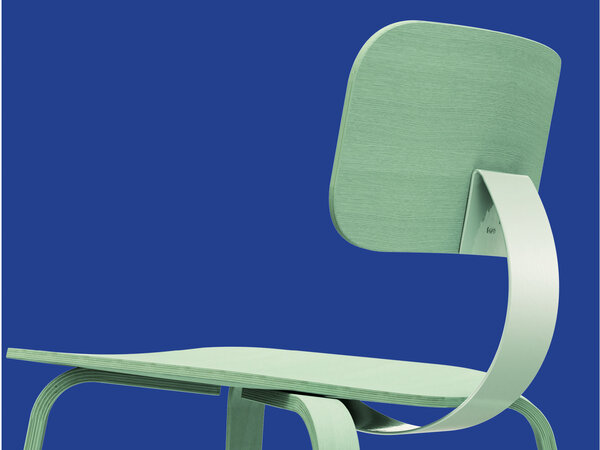 Product and Service Design, Interior and Spatial design Furniture Design – Spring Semester  18 September 2024 IED x ItaldesignA new concept car takes shape in Turin from the synergy between IED and Italdesign  10 September 2024 IED at the Salone Auto TorinoIED Torino celebrates 30 years of Transportation Design at the Salone Auto Torino with a display in Piazza Castello and a special exhibition at OGR. 27 August 2024 Rethinking the role of the laundrette to foster textile circularity from the perspective of designTogether with GirbauLAB, eight interdisciplinary teams of IED Barcelona students have presented a range of innovative proposals that redefine the experience of these spaces, contributing to the circular economy. 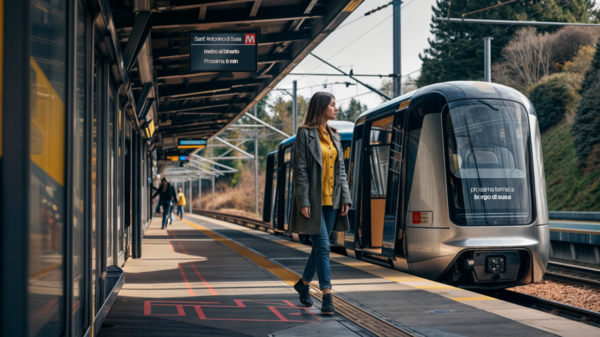 24 July 2024 IED Turin Graduates Its First Master's Students in Transdisciplinary Design. MobilityEight international students completed a thesis in collaboration with the Metropolitan City of Turin and the Links Foundation, aimed at improving regional mobility in Piedmont. 22 July 2024 The Enric Miralles Foundation rewards the coherence and sensitivity of “Cel·la”Maria Alonso wins the second edition of the IED Enric Miralles and Benedetta Tagliabue Award for the Best Interior Design Thesis at IED Barcelona with a sustainably built temporary shelter for artists inspired by monastic cells that includes the design of the furniture.  10 July 2024 IED Barcelona culminates the academic year with two days of graduationsThe graduation ceremonies will take place on 18 and 19 July, respectively, for 79 master’s and postgraduate students and 145 summer course students. 04 July 2024 170 students of 44 nationalities taking part in the IED Barcelona Summer CoursesThe educational offer of the summer programmes includes 10 courses aimed at adults and three for junior students. As a new proposal for this year, all will address the same transversal theme: water from the perspective of design.  01 July 2024 The new Marconi campus of IED Turin illuminated by video mapping that pays homage to its AlumniUntil July 20th, the new Marconi campus of IED Turin will be illuminated by a video mapping installation that tells the story of the school's courses through some of the best projects created by alumni in recent years 21 June 2024 Best Thesis Awards 2024 – IED BarcelonaVehicles with a positive impact on people and the environment, building personality through fashion, and approaching food culture from a visual arts perspective. These are some of the themes of the final projects that earned these awards. Don't miss it 22 October 2024 - 22 October 2024 • Barcelona Barcelona Design Week + IED Barcelona Design Exhibition: Strategy, Nature, WaterOn 22 October, IED Barcelona, Associate Venue of Barcelona Design Week, will present a triple exhibition at the Point One facilities: Best Grad Projects + Latam Creative Talent + Fusion Point Challenge of Water.  INTRODUCTION TO SAILBOAT DESIGN: A TECHNICAL EXPLORATIONSailboat design is a complex and fascinating field that blends engineering, hydrodynamics, and aesthetics to create vessels that harness the power of the wind for propulsion. In this highly technical article, we will delve into the key aspects of sailboat design, from methodology to evaluation.  1) Design MethodologyDesigning a sailboat is a meticulous process that begins with defining the vessel’s purpose and performance goals. It involves understanding the intended use, whether it’s racing, cruising, or a combination of both. Sailboat designers must also consider regulatory requirements and safety standards. Once the design objectives are established, naval architects employ various computational tools and simulations to create a preliminary design. These tools help in predicting the boat’s performance characteristics and optimizing its geometry. Design methodology also encompasses market research to understand current trends and customer preferences. This information is critical for creating a sailboat that appeals to potential buyers. 2) Hull DesignThe hull is the heart of any sailboat. Its shape determines how the boat interacts with the water. Hull design encompasses the choice of hull form, its dimensions, and the material used. The hull’s shape affects its hydrodynamic performance, stability, and overall handling. For example, a narrow hull design with a deep V-shape is ideal for speed, while a wider, flatter hull provides stability for cruising. The choice of materials, such as fiberglass or aluminum, impacts the boat’s weight and durability. The hull design is a balance between achieving efficient hydrodynamics and providing interior space for accommodations. As a designer, finding this equilibrium is a constant challenge. 3) Keel & Rudder DesignThe keel and rudder are critical components of a sailboat’s underwater structure. The keel provides stability by preventing the boat from tipping over, while the rudder controls its direction. Keel design involves selecting the keel type (fin, bulb, or wing) and optimizing its shape for maximum hydrodynamic efficiency. Rudder’s design focuses on ensuring precise control and maneuverability. Both components must be carefully integrated into the hull’s design to maintain balance and performance. Keel and rudder design can be particularly challenging because they influence the boat’s behavior in different ways. A well-designed keel adds stability but also increases draft, limiting where the boat can sail. Rudder design must account for both responsiveness and the risk of stalling at high speeds. 4) Sail & Rig DesignSail and rig design play a pivotal role in harnessing wind power. Sail choice, size, and shape are tailored to the boat’s intended use and performance goals. Modern sail materials like carbon fiber offer lightweight and durable options. The rig design involves selecting the type of mast (single or multiple), rigging configuration, and mast height. These choices influence the sailboat’s stability, maneuverability, and ability to handle varying wind conditions. Balancing the sails and rig for optimal performance is a meticulous task. The sail plan should be designed to efficiently convert wind energy into forward motion while allowing for easy adjustments to adapt to changing conditions. 5) BalanceBalancing a sailboat is crucial for its performance and safety. Achieving the right balance involves a delicate interplay between the hull, keel, rudder, and sail plan. Proper balance ensures the boat remains stable and responds predictably to helm inputs, even in changing wind conditions. Balance is not a static concept but something that evolves as the boat sails in different wind and sea conditions. Designers must anticipate how changes in load, wind angle, and sail trim will affect the boat’s balance. Achieving balance is both an art and a science, and it often requires iterative adjustments during the design and testing phases to achieve optimal results. 6) PropulsionWhile sailboats primarily rely on wind propulsion, auxiliary propulsion systems like engines are essential for maneuvering in harbors or during calm conditions. Integrating propulsion systems seamlessly into the boat’s design requires careful consideration of engine placement, fuel storage, and exhaust systems. The choice of propulsion system, whether it’s a traditional diesel engine or a more eco-friendly electric motor, also impacts the boat’s weight distribution and overall performance. 7) ScantlingScantling refers to the selection of structural components and their dimensions to ensure the boat’s strength and integrity. It involves determining the appropriate thickness of the hull, deck, and other structural elements to withstand the stresses encountered at sea. Scantling is a critical aspect of sailboat design, as it directly relates to safety. A well-designed boat must be able to withstand the forces exerted on it by waves, wind, and other environmental factors. 8) StabilityStability is a critical safety factor in sailboat design. Both upright hydrostatics and large-angle stability must be carefully assessed and optimized. This involves evaluating the boat’s center of gravity, ballast, and hull shape. Achieving the right balance between initial stability, which provides comfort to passengers, and ultimate stability, which ensures safety in adverse conditions, is a delicate task. Designers often use stability curves and computer simulations to fine-tune these characteristics. 9) LayoutThe layout of a sailboat’s interior and deck spaces is a blend of functionality and comfort. Designers must consider the ergonomics of living and working aboard the vessel, including cabin layout, galley design, and storage solutions. The deck layout influences crew movements and sail handling. Layout design also extends to considerations like ventilation, lighting, and noise control. Sailboats are unique in that they must provide both comfortable living spaces and efficient workspaces for handling sails and navigation. 10) Design EvaluationThe final phase of sailboat design involves rigorous evaluation and testing. Computational fluid dynamics (CFD) simulations, tank testing, and real-world sea trials help validate the design’s performance predictions. Any necessary adjustments are made to fine-tune the vessel’s behavior on the water. The evaluation phase is where the theoretical aspects of design meet the practical realities of the sea. It’s a crucial step in ensuring that the sailboat not only meets but exceeds its performance and safety expectations. Conclusion:In conclusion, sailboat design is a highly technical field that requires a deep understanding of hydrodynamics, engineering principles, and materials science. Naval architects and yacht designers meticulously navigate through the intricacies of hull design, keel and rudder configuration, sail and rig design, balance, propulsion, scantling, stability, layout, and design evaluation to create vessels that excel in both form and function. The harmonious integration of these elements results in sailboats that are not just seaworthy but also a joy to sail, and this process is a testament to the art and science of sailboat design. Click here to read about “ HARNESSING THE POWER OF ARTIFICIAL INTELLIGENCE IN BOAT DESIGN “ Follow my Linkedin Newsletter here: “LinkedIn Newsletter” 0 comments Leave a replySave my name, email, and website in this browser for the next time I comment. Recent Posts
Recent Comments
 Clearing 2024 is now open
BEng (Hons) Yacht Design and Production
Why study a yacht design and production degree at Solent UniversityDream of designing race-winning yachts? This unique course, with an international reputation, has been designed alongside industry experts to deliver the skills you need.
 Course overviewSolent’s yacht design and production course has an international reputation and has been developed in conjunction with the industry to ensure essential skills in both the design and production of yachts and commercial craft are covered. Students on this modern course will study the engineering science underlying great design, along with the fundamental principles of naval architecture, construction methods and high-tech fibre reinforced composite materials. Planning and management processes for the efficient, effective production of racing sailing yachts, RIBs, motor yachts, cruising yachts, patrol boats and commercial craft are also key elements in the syllabus. A strong practical emphasis is present throughout the course, allowing students to gain valuable knowledge of hands-on examples, design applications and workshop experience in production methods and materials. This course is part of the South Coast Institute of Technology (IoT), a partnership of colleges, universities and industry-leading employers to create new career opportunities in the technology sector. IoT courses like this one are precisely tailored to the needs of employers in the maritime, engineering and digital industries – industries which are hungry for talented new engineers, technologists, technicians and creatives like you. Any questions?Contact UK admissions Contact international admissions  This course is part of the South Coast Institute of Technology, a collaboration of FE colleges and universities offering courses that can lead to a wide range of exciting career pathways to boost employability. Course featuresFoundation year available. If you're not quite ready for a full undergraduate degree, there's alternative entry through one of our foundation years Specialist facilitiesThis course has access to specialist facilities Top-up optionIf you have an appropriate Level 5 qualification, you can top it up to a degree in just a year Study abroadYou have the opportunity to study abroad in one of our partner universities for a semester on this course Who is this course for?This popular course is perfect for aspiring designers of racing yachts or luxury superyachts. Students learn the fundamentals of yacht design alongside the latest construction methods to gain a solid grounding for roles in yacht design, naval architecture or management of new builds and refits. What does this course lead to?The course maintains close links with previous graduates, some of whom have gone on to work as naval architects, design engineers and yacht designers at companies such as Dubois Yachts, Laurent Giles Naval Architects, Ker Yacht Design, Sunseeker Yachts, Monaco Marine and Viareggio Shipyards in Italy. Graduate storiesHear from Solent alumni about where their careers have taken them and how studying at Solent prepared them for their future. 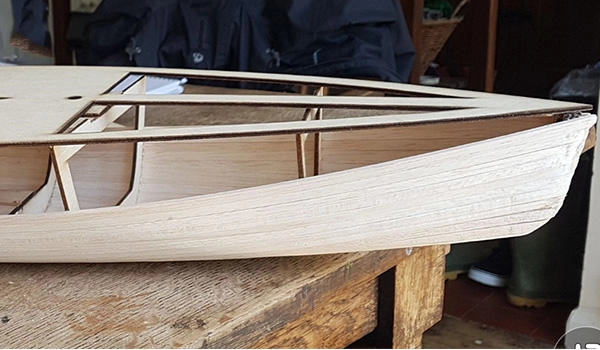 “ The facilities are amazing, with FRP labs, and a CAD suite specifically for use by yacht design students ” 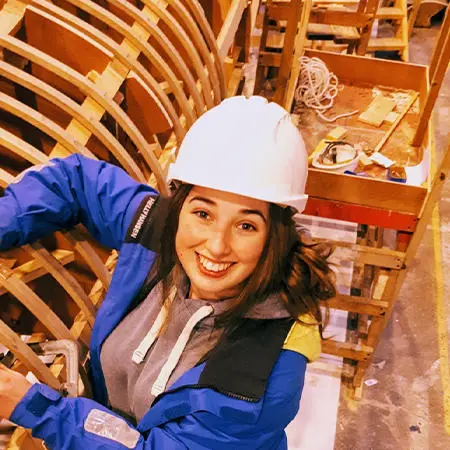 Elodie GrenenGraduate Naval Architect  Meet the teamThe course is delivered by a team of specialist naval architects, yacht designers, and production designers, supported by computer-aided design (CAD)/drawing office instructors and fibre-reinforced plastic (FRP) workshop instructors. All team members come from the yacht and small craft industry and maintain their close links through consultancy, design practice, and professional bodies. 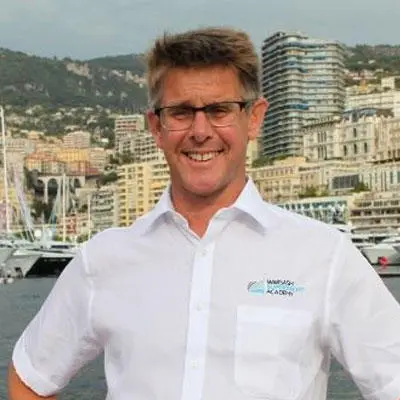 Giles BarkleyCourse Leader 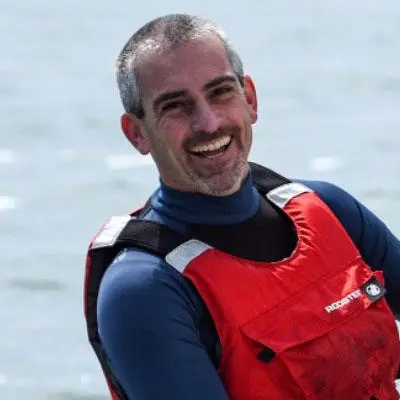 Vittorio BoccoliniSenior Lecturer The University cannot guarantee any particular members of staff will teach specific aspects of the course in the future, but will endeavour to ensure the teaching team maintains their balance of experience and qualifications. Students have full access to the University’s specialist facilities, including our composite construction workshop, yacht drawing office and modern CAD office, which is equipped with the latest commercial marine design and production software, as well as a fully-equipped specialist composite workshop a 60m towing tank and static four-metre stability tank. Our vibrant campus brings state-of-the-art facilities to enhance your learning and elevate your student experience. Our award-winning teaching building, The Spark is centred around students and offers a stimulating study environment with flexible learning spaces. Away from studying, why not try out the gyms, fitness studios and sports halls in our £28 million Sports Complex, or watch a blockbuster film at our student-run cinema with Dolby Atmos audio. International opportunitiesBroaden your horizons by adding an international dimension to your CV – essential to achieving success in today’s fast-changing, global environment. Studying, working or volunteering in another country could be the experience of a lifetime. Enhance your degree by developing important global skills such as knowledge of other countries, language skills, intercultural awareness, adaptability and confidence. For more information, please email [email protected] .  What you'll studyCore modules, computer aided design. You’ll focus on the fundamental engineering drawing skills required by yacht design and production students in order to produce a set of 2D design and build drawings for either a sailing yacht or motor vessel and its components. Naval ArchitectureIntroducing the practice of naval architecture design, you will learn to use and apply geometric parameters which help determine the hull shape for the vessel. You’ll apply design tools used for producing an initial hull form that meet certain design criteria in order to produce a suitable and stable hull. Marine Materials and ProductionThis module provides an introduction to the different materials commonly used in the construction of marine craft and other various components found on board. You will also learn the production processes involved in the construction of boats from these materials. Structural MechanicsUnderstanding how to ensure the structural integrity of a vessel is a key element of designing a safe vessel. This module provides an introduction to the fundamental core material on which both structural mechanics theory and marine craft structural design are built. Marine SystemsYou’ll learn about mechanical and electrical marine systems typically installed in small craft and examine the nature and range of marine systems fitted on board, to gain an understanding of the technical aspects considered for the design and installation of small craft marine engineering components. Yacht Engineering SkillsAlmost all aspects of yacht design are underpinned by a knowledge of mathematics, and you will learn skills for yacht and small craft designers to transpose formulae for problem solving. Computer Aided ModellingDue to the plethora of design software used in the marine industry, this module will ensure that you develop the ability to transfer design information effectively between different software packages. Sailing Yacht DesignThe focus of this module is on the practical design of sailing boats, and this module gives you a unique opportunity to gain experience of sailing yacht designs for craft up to 24 metres in length, as well as working on a range of sailing yacht design case studies. Motor Boat DesignThe aim of the module is to develop the student’s technical design skills alongside the CAD design skills as required in a design office for motorboat design. The module also provides students with authentic ‘real world’ experience close to the typical design office practice associated with motor vessel design practice. Resistance and PropulsionThis module continues to build on the principles covered in the first year, this time concentrating on the prediction of hydrodynamic resistance and powering requirements of small craft hulls. Marine Production TechnologyThis module addresses the detailed aspects of how you manufacture cored Fibre Reinforced Composite (FRC) structures specific for marine production. This involves a theoretical knowledge which is backed up with practical experience of how to manufacture a comprehensive range of sample panels in controlled environments. Applied Marine SystemsTo refine the marine system integration process, you will gain an overview of regulations applicable to marine engineering systems. You will also acquire an appreciation of marine mechanical systems and finally, you will gain an introduction to the issue of ‘Green Design’ and environmental considerations. Computer Aided EngineeringThis module focuses on modern CAE techniques employed to evaluate the technical and statutory aspects of design. You will draw on your computing skills as well as technical design theory to utilise this knowledge in practical design scenarios, enabling you to make quick, efficient design choices. Structural Design for ProductionThis module develops the application of structural design principles and methodologies to a variety of small craft structures. The module relies heavily on taking a computer assisted engineering approach to calculate structural loads. Carrying out project work is one of the most critical skills for your future career as an engineer. In this module, you will carry out a project in a topic area chosen by you. You will be encouraged to undertake project related to real world application that allows you to build upon and expand your knowledge for renewable energy and engineering. Optional modulesPlease note: Not all optional modules are guaranteed to run each year. Yacht SurveyingProfessional surveyors rely on a mix of practical experience acquired over a number of years and in depth understanding of yacht construction methods and materials. This module provides a practical in-depth study of the techniques and methodologies of surveying a range of construction methods for Yachts and Small Craft. Marine Production ManagementYou will learn about modern production management theory, covering issues including resource allocation techniques including critical path analysis, lean manufacturing, earned value analysis and the project office environment. Applied Yacht ManufacturingThis Work Based Learning module is to develop a reflective approach to working practice, by experiencing and developing a range of degree-related ideas and concepts for professional working environment, to prepare you for industry. How you will learn and be assessedYou will learn by:.
You may be assessed by a combination of:
Solent’s curriculum framework builds on our unique, creative and applied approach to teaching. The transformation of students’ lives is at the heart of our mission as a university, and our curriculum – informed by the latest theory – reflects this shared educational vision.  Study supportThe student achievement team are on hand to help you succeed during your studies at Solent. They aim to contact you at key times during your time here with personalised information, advice and guidance, by email or phone. Access Solent provides information, advice and guidance for disabled students. All students can access Succeed@Solent , Solent's online guide to getting better grades. It offers extensive, practical information and advice on topics such as academic writing, research and presentations.  Why choose a career in yacht design?The UK has a strong pedigree in yacht design. According to British Marine , the industry is supported by over 38,000 jobs across a variety of roles, with over 10,000 new boats produced in 2019 for both domestic and international markets. Solent’s yacht design and production degree boasts race-winning designers amongst its graduates. Other have also gone on to work as naval architects, design engineers and yacht designers at companies such as Dubois Yachts, Sunseeker, Monaco Marine and Viareggio Shipyards. During the course you will benefit from a full programme of RINA Southern Joint Branch lectures, as well as guest speakers from industry companies such as Nigel Gee BMT, Babcock Engineering and Gurit. You’ll be encouraged to attend local boat shows, including the Southampton International Boat Show and Seawork International. We also organise yard visits, with recent trips including Sunseeker International and Solent Refit. 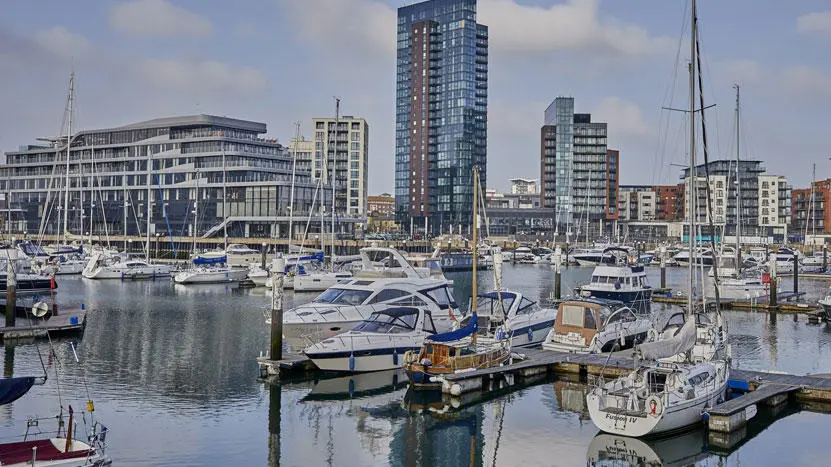 You could earn:Naval architect. Starting salary: £25,000 to £35,000 With experience, salaries can range from £35,000 to £50,000, rising to £60,000 in some instances for senior naval architect posts. The stated salaries are published on prospects.ac.uk . Solent FuturesThe Solent Futures team is committed to getting students into great careers. While you are studying, the team can help you with finding work experience or placements, link you with a mentor, check your CV, or offer one-to-one guidance. If you're in your final year, we also have graduate job opportunities just for Solent graduates.  UK uni for sustained employment Longitudinal Educational Outcomes, 2022 Accreditations, recognitions and membershipsTuition fees. The tuition fees for the 2024/25 academic year are:
For further information, please visit our tuition fees page . Extra course costsWhile most course costs are covered by your tuition fees, some essential resources and optional extras may need to be paid for separately. These additional costs are listed below. For advice on budgeting and managing your money, please contact [email protected] . The 2024/25 other costs are: Optional costs
Bursaries, scholarships and financial supportSolent University offers a range of bursaries and scholarships that provide financial assistance or waive fees for tuition or accommodation. Each bursary or scholarship has specific eligibility criteria. Check out our bursaries and scholarships pages to find out more. Cost of living support At Solent, we understand that the cost of living crisis may be of some concern. To help, we've put together some detailed information to show what support is available and how to make your money go further. Graduation costsThere is no charge to attend graduation, but you will be required to pay for the rental of your academic gown (approximately £45 per graduate, depending on your award). You may also wish to purchase official photography packages, which range in price from £15 to £200+. Graduation is not compulsory, so if you prefer to have your award sent to you, there is no cost. Extra guest tickets will go on sale after results publication and will be sold on a first-come-first-served basis. The cost per ticket is currently £15. Please note, we do not guarantee there will be any extra tickets available to purchase. Student finance videos Entry requirementsPlease select an option below: Key entry requirements112-128 ucas tariff points.
As a general guide, we look for qualifications that are equivalent to the British high school A-levels. If you are applying from outside the UK, find information about entry requirements, visas and agents for your country here. For further information about EU qualifications, please contact admissions . For international students who do not meet the direct entry requirements for this undergraduate degree, our trusted partner, QA Higher Education offers the following pathway programme designed to develop your academic and English language skills:
For further information about international qualifications, please contact admissions . Note to all international students requiring a visaAll international applicants need to be aware that the English language requirements to attend Solent University, and the English language requirements to obtain a visa from the Home Office, may be different. This means that if you meet the Solent University language requirement to gain a place on the course, you may still have to meet additional requirements to be granted with a visa by the Home Office. We strongly advise all applicants to visit the Home Office website which outlines all the requirements for a successful visa application and to take a look at our 2023 course entry statement document. How to applyAny student applying for the first year of a full-time/sandwich undergraduate course must apply through UCAS (University and Colleges Admissions Service). This includes mature, overseas and EU students. Nearly all schools and colleges offer their students the facility of applying electronically through the UCAS website using 'Apply'; it may also be used by those applying independently in the UK and overseas. This facility and all course information can be found on the UCAS website: www.ucas.com . Your application should reach UCAS by 31 January if you hope to enter a course the following autumn. Early application is advised for the most popular subject areas. Late applications may be made until the end of June. The UCAS Code for the University is S30, code name SOLNT. Find out what happens after you apply Contextual offers Solent endeavours to offer learning opportunities to students from all backgrounds. When we receive and review an application, we take into consideration the context and personal circumstances of applicants when making a decision, which means our advertised entry tariff could be reduced. Find out more about Solent's contextual offers Alternative entry optionsTop-up route: We welcome applications from students currently studying a Foundation Degree, DipHE, HNC, HND or modules of an undergraduate degree course at another university, who wish to enter directly into Years 2 or 3 of one of our undergraduate degree courses. Please contact our admissions team for more information: contact us Language requirementsApplicants who do not have English as their first language will be required to demonstrate an approved level of proficiency in the use of the English language. The agreed minimum requirements for this course are:
Qualifications are checked before enrolment, and international students must bring their original certificates or certified copies when coming to study at the University. Pre-Sessional English programme The University also offers a pre-sessional English programme for international students who wish to improve their level of English before starting a degree course.  Make your application Not ready to apply? Browse Course MaterialCourse info.
Departments
As Taught In
Learning Resource TypesSailing yacht design (13.734), study materials. A Handicapping System for Cruising/Racing Yachts ( PDF ) An Overview of the SCRIMP™ Technology ( PDF ) General Links ( PDF )  You are leaving MIT OpenCourseWareRefastening a Wooden Hull - Season 4, Episode 1 Now Available! 12 Essential Yacht Designers, Part 1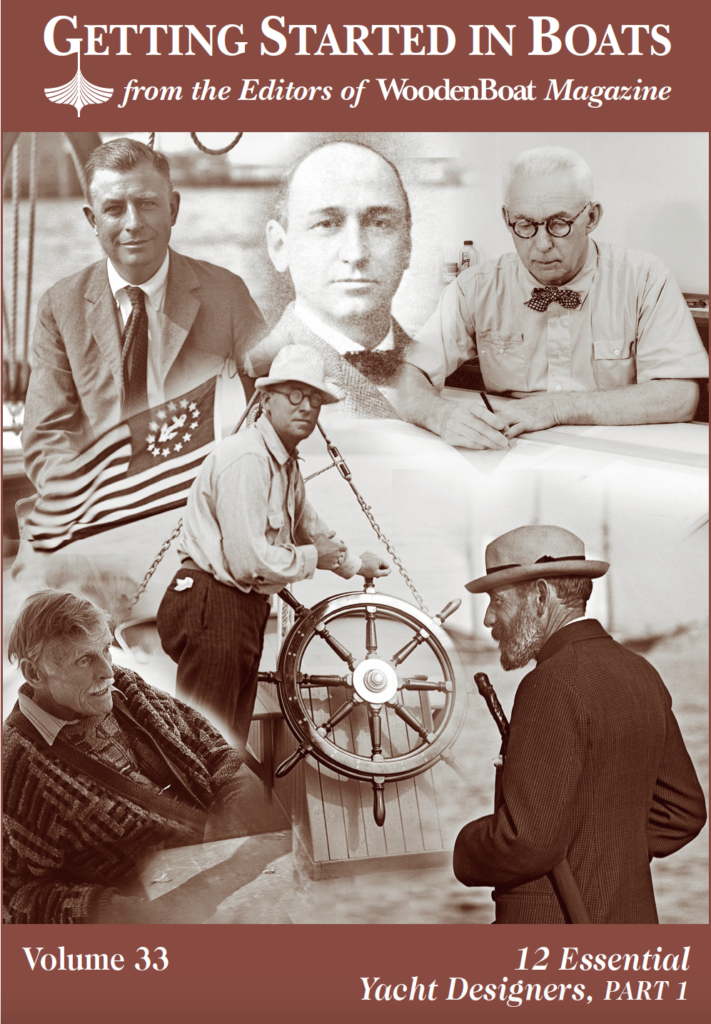 The original print version of this quide can be viewed as a PDF or purchased from the WoodenBoat Store. Alden • Atkin • Crowninshield • Garden • Hand • HerreshoffAs one develops an appreciation of yacht design, one runs into certain designers’ names again and again. The purpose of this article is to introduce 12 important 20th-century designers and to tell just enough about each one to describe the overall arc of his career. The editors picked a dozen as the number, and we agreed on what we think is a well-rounded group of often-heard names that we hope will benefit the reader who is just starting to appreciate the art and science of yacht design. Six of these designers are portrayed in this issue of Getting Started in Boats, and six more will be presented in the next issue. We don’t mean to say these 12 are “the best of all” designers, although they are certainly among the best of all time, nor is this presentation considered a ranking. In this issue, our subjects are John G. Alden, William Atkin, Bowdoin Bradlee Crowninshield, William Garden, William Hand, and Nathanael Greene Herreshoff. In Part 2, to appear in WoodenBoat No. 226 , the subjects will be Olin Stephens, Philip Leonard Rhodes, Charles Raymond Hunt, W. Starling Burgess, William Fife III, and Leslie Edward “Ted” Geary. It is the designer’s job to create a boat for a particular individual, pattern of use, or locality. Few objects are created through such a dynamic interplay of science, natural evolution, tradition, and art. One yacht may be judged against another in any of a number of ways depending on the observer’s priorities, such as beauty, construction technology, comfort, or speed, but every yacht must function in harmony with the eternal natural forces of wind and waves in her given locality or across the oceans of the world. There is no escaping the connection between boats and nature, and that may be part of the reason why they seem to affect us on a deeper level than most of the other objects in our lives. Those who wish to seek a deeper understanding of these yacht designers and yacht design in general will find a solid technical and historical foundation in these books: Skene’s Elements of Yacht Design by Francis Kinney; The Encyclopedia of Yacht Designers , which I edited with Lucia Del Sol Knight; Understanding Boat Design by Edward S. Brewer; and Yacht Designing and Planning by Howard I. Chapelle. Further reading about these designers and their work can be found in numerous WoodenBoat magazine articles (see the online index at the “Research” tab at WoodenBoat.com ) or in biographies written about the designers, or in many cases in books written by the designers themselves. The books listed above and those listed at the end of each segment in Parts 1 and 2 are available through The WoodenBoat Store . John G. Alden1884–1962, boston, massachusetts.  John G. Alden, shown above during the 1925 Bermuda Race, designed thirteen yachts named MALABAR—ten of them schooners—for his personal use. At right is MALABAR II of 1922. One of Alden’s most admired designs, she is still sailing today, and her plans are available from the WoodenBoat store. John Alden began his independent career in 1909 after apprenticing with W. Starling Burgess and B.B. Crowninshield. Early on, he gained a widespread reputation for small schooners that he had based on fishing boats operating out of Gloucester, which were well suited for the then-new sport of ocean racing. It was one of the few times in history when successful racing yachts were also superb cruising yachts, and because of this versatility many Alden schooners have been preserved. Alden himself raced ten schooners named MALABAR that he had designed and had built for himself to test hulls, rigs, details, and aesthetics. His MALABARs won the Bermuda Races of 1923 and 1926, and in 1932 the first four places were taken by Alden schooners. (Three of Alden’s personal MALABARs after MALABAR X were not schooners; one was a yawl and two were ketches.) Alden’s office produced about 150 schooner designs in all, and a series of 43-footers are considered among the most beautiful and seamanlike cruising boats ever drawn. Racing rules—complex formulas that involve a complicated set of measurements—have often influenced yacht designs. A racing rule developed by the Cruising Club of America (CCA) in the 1930s encouraged yawls and sloops of more modern hull form and using marconi rigs—so called because the triangular sails were set on masts tall enough to remind people of inventor Guglielmo Marconi’s radio transmission towers. Alden designed some of the finest examples of the new type as well. These, too, combined capabilities for both racing and cruising, establishing harmonious aesthetics that became more or less permanent standards. Besides schooners and ocean racers, 44 motorsailers, and 88 power yachts, the Alden office produced many racing sloops, cruising sloops, yawls, and ketches, including such semi-production family cruising-boat designs as the Coastwise Cruiser, Barnacle, Malabar Senior, and several variations of the Malabar Junior design. In all, 106 “one-designs,” or boats built identically for racing against each other, were produced, including the Biddeford Pool One-Design, the Alden O-boat, the Alden Triangle, the Indian class, Sakonnet, and U.S. One-Design. (A profile of Alden appeared in WoodenBoat No. 32 ; see also John G. Alden and His Yacht Designs, by Robert W. Carrick and Richard Henderson. Alden’s plans reside with Niels Helleberg Yacht Design, the successor to Alden’s company; see www.aldendesigns.com . William Atkin1882–1962, new york and connecticut. 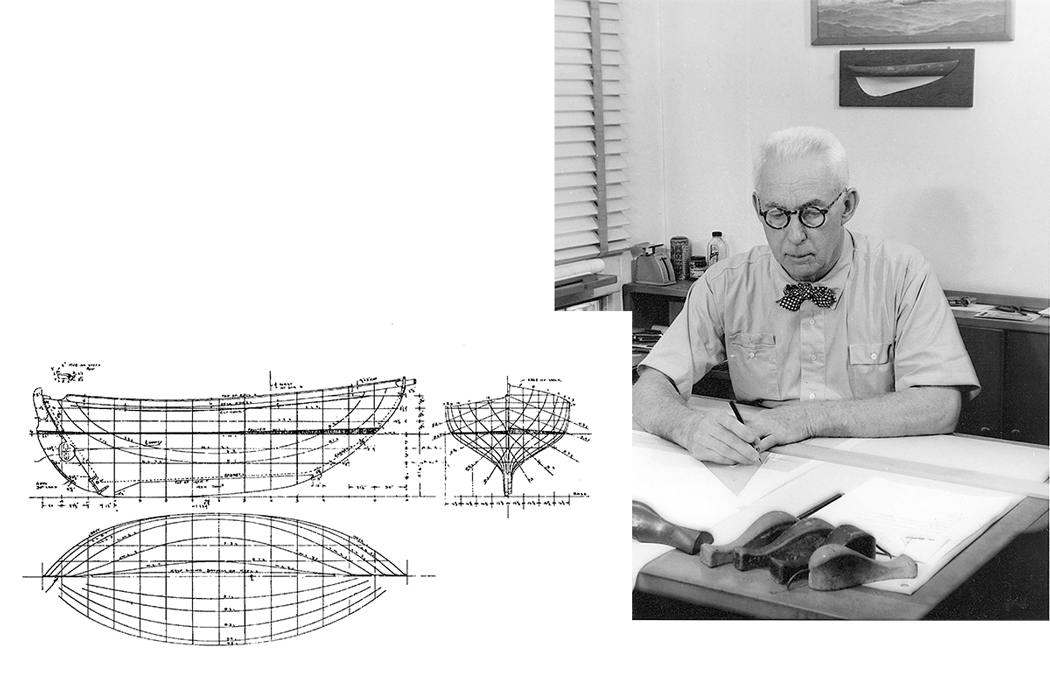 William Atkin designed a wide variety of boats, among them Scandinavian-inspired double-enders like the 32’ cutter DRAGON shown above. Atkin had a prolific career as a designer and yachting writer, first on his own and later with his son, John. Some designers achieve fame on the race course or with technological innovation, but others are appreciated because their work finds an emotional connection with everyday people, generation after generation. William Atkin seldom designed racing boats but drew boats for about every other conceivable purpose. He was as good a writer as he was a designer. In addition to three books, he is known for the designs he published in the MotorBoating “Ideal” series. He was the editor of Yachting during World War I, technical editor of Motor Boat after that, and edited his own magazine, Fore An’ Aft, from 1926 to 1929. Beyond the usual technical information, much of his writing served to point out what was enjoyable about each design and what type of person would get the most out of it. Atkin was one of the first designers to introduce American yachtsmen to heavy-displacement, double-ended offshore cruising yachts based on Scandinavian antecedents. Such boats, some later built in fiberglass, helped popularize offshore sailing after World War II. Beyond this, however, his work includes a wide variety of large and small sailboats, a large number of powerboats, many small craft for a wide range of purposes, and a number of much-beloved houseboats and shanty boats. The fundamental excellence of his small boats is once more being discovered and appreciated today. Atkin’s career eventually merged with that of his son, John, who continued and greatly expanded upon the traditions his father established. (A profile of the Atkins appeared in WoodenBoat No. 168 – 169 ; see also The Book of Boats Volumes I and II, Three Little Cruising Yachts, Motor Boats, and Of Yachts and Men. Atkin’s plans reside with Pat Atkins; see www.atkinboatplans.com .) Bowdoin Bradlee Crowninshield1867–1948, boston, massachusetts.  At a time when many designers were taking inspiration from successful workboats, B.B. Crowninshield introduced ideas specific to yachts. His Dark Harbor 121/2, shown here (and available from the WoodenBoat Store) is one of his classic small daysailers. A major figure in racing yacht design in the early 20th century, B.B. Crowninshield was among the first to move firmly toward a pure “yacht” style of hull that bore little resemblance to earlier commercial types. A typical Crowninshield yacht is long-ended, narrow, and deep, with entirely outside ballast on a very abbreviated, fin-like keel; U-shaped ’midship sections; and a large rig. They ranged in size from the Dark Harbor 121/2 (12′ 6″ on the waterline) to the 90′ extreme AMERICA’s Cup defense candidate INDEPENDENCE. Yachts of this form were optimized for smooth water and the relatively light airs of summertime, and they were created before ocean racing and voyaging, family cruising, and living aboard came to require entirely different hull shapes. Crowninshield’s cruising yachts tended toward the same general proportions as his racers. In his time auxiliary engines were uncommon, so sailing performance in a wide range of conditions, including light wind, was important in a way it is not for most yachtsmen today. One of Crowninshield’s major contributions was in refining Gloucester fishing schooners to be safer and faster, adapting yacht-like characteristics (especially deep draft and more Vshaped sections) to offshore commercial use. In an interesting twist, Crowninshield’s apprentice John Alden was later instrumental in adapting the Gloucester schooner type for yachting. Few Crowninshield yachts survive today because of their extreme forms. They were too flexible to last very long without strengthening, and in general the type of hull went out of style. Nevertheless, Crowninshield designs are some of the most beautiful examples of the type, and the few boats built from them that do survive are much valued in classic yachting circles. (Crowninshield’s plans reside at The Peabody Essex Museum in Salem, Massachusetts; see www.pem.org .) William Garden1918–2011, seattle, washington and sidney, british columbia.  William Garden designed workboats and pleasure boats of all kinds. The powerboat shown here is a 37’ LOA troller yacht distinctly showing her commercial fishing boat heritage. Remarkably versatile, William Garden produced sailing yachts, power yachts, military craft, towing boats, cargo carriers, small craft, fishing boats—over 1,000 designs—in what may have been the longest career of any designer. He could produce a design that was strictly traditional, and he had direct, detailed knowledge of such types. He also designed many boats that were purely futuristic, boldly advancing into new territory. Most often his designs were best described as “timeless,” being contemporary in most respects but showing a sweetness of line that nonetheless connected them to traditional aesthetics. Fishing boats for the Pacific Northwest and motoryachts that resembled them were a big part of Garden’s output, and he clearly enjoyed yachts with a rugged, no-nonsense workboat sensibility. Coming as he did from a temperate coast with a lot of rain, Garden often worked pilothouses into his sailboat designs, making them ideal for year-round use. He also designed sailing craft for commercial fishing and cargo-carrying. While many of Garden’s power cruisers were of the heavy-displacement, low-speed fishingboat- inspired type he helped to popularize, he also drew a considerable number of larger, luxurious motoryachts with modernistic lines but having seamanlike features. He created a large number of charming cruising yachts, some of them very small. Remarkably, considering his penchant for heavy displacement, he occasionally drew excellent light-displacement cruising sailboats that show the potential of the type when it is uninfluenced by racing handicap rules. (Garden wrote Yacht Designs, Volumes I and II; The Making of Tom Cat; and numerous articles in WoodenBoat. A boat built to one of his designs appears on page 64 of the current issue. His plans reside at Mystic Seaport; see www.mysticseaport.org .) William Hand1875–1946, new bedford, massachusetts.  William Hand, shown above in 1923, made the design of cruising motorsailers a specialty. The 63’ double-ender shown here came off his design board in 1933, and one of the two sisters built that year was for Hand’s personal use. Another very versatile designer, William Hand is primarily known today for his motor- sailers, which are regarded as some of the best of that genre. A motorsailer is primarily a motorboat but has a sailing rig capable of being the yacht’s sole propulsion in winds over about 18 knots, and serving to reduce motion, ease steering, and increase fuel economy whenever desired. Large tankage provided good range under power, with 1,500 miles being typical. While most of Hand’s motorsailers were built to high yacht finish, they retain a seriousness of appearance derived from their commercial ancestors, most notably the Maine sardine carrier. Hand’s superstructures always included a pilothouse, but in size they fall about midway between those typical of a sailboat and those commonly seen on powerboats, contributing to an interesting and refined appearance. Some of his motorsailers, including those he had built for himself, were used for swordfishing, with the addition of the necessary bowsprit platform for the harpooner. Schooners were another of Hand’s important contributions, and while they were often successful on the race course they were somewhat more rugged, dramatic, and workboat-like in appearance than their contemporaries. Hand’s bestknown schooner is the 88′ BOWDOIN, drawn in 1921, which made many voyages of exploration to the Arctic and continues to do so today under the ownership of the Maine Maritime Academy. Hand was among the first to adapt the Chesapeake deadrise-type workboat form to produce fast, handsome V bottomed motorboats, including some early speed-record holders. (A profile of Hand appeared in WoodenBoat Nos. 28 – 29 ; see also Designs of William Hand, Jr., compiled by the WoodenBoat Research Library. Hand’s surviving plans reside at The Hart Nautical Collections, Massachusetts Institute of Technology, Cambridge; see web.mit.edu/museum/collections/nautical.html .) Nathanael Greene Herreshoff1848–1938, bristol, rhode island.  Fourteen Buzzards Bay 30s, 30’ on the waterline and 46’6” overall, were built for the 1902 racing season at the Beverly Yacht Club in Massachusetts to a design by N.G. Herreshoff (shown above in 1894). Four of the surviving sisters were fully restored in 2008; see WoodenBoat No. 203 . Few would dispute that N.G. Herreshoff is the most gifted and successful yacht designer the world has produced so far. A structural and mechanical engineer of great genius, he designed the boilers and engines for the steam yachts and military vessels he designed, and he created sailing yachts that were lighter, stronger, and faster than those of his competitors. Herreshoff boats have an unusually high survival rate, and many still sail either in original condition or after having been restored to original condition. He invented hardware still in use today, including sail tracks and slides, and he improved the designs of winches, anchors, and cleats. He also helped popularize the use of fin keels, bulb-shaped ballast keels, spade rudders, folding propellers, hollow wooden spars, and metal spars. He is believed to be the first American to develop a practical fast catamaran. He also pioneered efficient semi-production boatbuilding methods at Herreshoff Mfg. Co. His AMERICA’s Cup defenders were VIGILANT (1893), DEFENDER (1895), COLUMBIA (1899 and 1901), RELIANCE (1903), and RESOLUTE (1920). Some of the most wholesome and beautiful, as well as fastest, racing yachts ever created under a rating rule were designed under the Universal Rule, which he devised around 1904. He himself designed many of the finest yachts built to that rule, in various classes always designated by letters, such as J, P, Q, and R. He also designed a large number of one-design classes, including the New York 30, 40, 50, 65, and 70; the Buzzards Bay 15, 25, and 30; the Bar Harbor 31; the Newport 29 and 30; the Fish class; and the immortal Herreshoff 121/2, nearly 400 of which were built. N.G. Herreshoff’s son L. Francis Herreshoff was also a gifted designer and a much-beloved yachting writer. Another son, A. Sidney DeWolf Herreshoff, served as chief designer at the Herres-hoff Mfg. Co. in its later years. Halsey Herreshoff, son of Sidney, continues the Herreshoff tradition today at Herreshoff Designs, Inc., www.herreshoffdesigns.com. (A profile of Herreshoff appeared in WB No. 33–35. See also Capt. Nat Herreshoff by L. Francis Herreshoff; Herreshoff of Bristol, by Maynard Bray and Carlton Pinheiro; Recollections of N.G. Herreshoff by N.G. Herreshoff; and Herreshoff and His Yachts by Franco Pace. The designer’s half models reside at the Herreshoff Marine Museum in Bristol, Rhode Island; see www.herreshoff.org. Plans and specifications reside at The Hart Nautical Collections, Massachusetts Institute of Technology Museum, Cambridge; see web.mit.edu/museum/collections/nautical/html .) Dan MacNaughton is co-editor, with Lucia Del Sol Knight, of The Encyclopedia of Yacht Designers. He currently works as a finisher at Artisan Boatworks in Rockport, Maine, and is a frequent contributor to WoodenBoat. Building an Amesbury Skiff – Part 1Small boat decks, the backbone: stem, rabbet, and frame sockets, build the jericho bay lobster skiff: part two, subscribe for full access. Flipbooks are available to paid subscribers only. Subscribe now or log in for access.  |
COMMENTS
Students on this three-year course study the engineering science behind great yacht design as well as the fundamental principles of naval architecture. A foundation year is available, as well as opportunities to study abroad. Notable successes include the class of 2014, who built the foiling catamaran Solent Whisper (pictured above).
Landing School Yacht Design graduates are working all over the world designing boats, performing 3D modeling, yacht construction, sail making/ design, technical sales, component design, and project management. For more information, please call 207-985-7976 or fill out a contact form. In the Yacht Design program, you will learn to combine design ...
The entire Yacht Design & Naval Architecture course requires about 3,200 hours of study and assignment preparation, or about 1 to 3 hours a day to complete the course in 4 years. Westlawn is a work-at-your-own-pace school. Some complete in as little as two years, others may take a decade.
This subject teaches students, having an initial interest in sailing design, how to design good yachts. Topics covered include hydrostatics, transverse stability, and the incorporation of the design spiral into one's working methods. Computer aided design (CAD) is used to design the shapes of hulls, appendages and decks, and is an important part of this course. The capstone project in this ...
Yacht Design is all about creating a dynamic, artful watercraft with nothing more than your imagination, technical skills, and a computer. The design, shape and materials defined by the designer and used in the construction of a boat can make it more energy efficient, cost effective and aesthetically pleasing. ... Study subjects include: CAD ...
Macnaugtongroup Yacht Design School "We make a determined attempt to teach not just a series of techniques but a coherent approach designed to promote not just competence but excellence in yacht design." Two year course for both non-residential and residential students proceeding at their own pace with total tuition less than $2000.
The conventional representation, the creation and calculation, the study of materials and construction systems of hulls and superstructures, and for interior furnishings. The plant engineering and the choice of propulsion systems too. Always with an eye to proportions, innovation and elegant lines without exceeding in awe design...
As nominations continue for the Design & Innovation Awards, BOAT speaks to the experts about what they consider to be the principles of good yacht design and the favourite projects they've worked on. Designing a luxury yacht is no mean feat and, whether the designer is tasked with a boundary-pushing exterior or an interior that can stand the test of time, designers must unleash their ...
Yacht design is a niche, with only a handful of well-known names producing some spectacular designs. The interiors, exteriors, and all systems in a boat are designed to be practical, forced by constraints like lack of space, the marine environment, and the need to incorporate aspects of a vehicle (engine, etc.), a resort (dinghies and other ...
The Yacht Design Master also provides all the essential cultural tools and historical knowledge usefull for the yacht designer. The course will be held in Marina di Carrara, C/O the Academy of ... Application of forms, geometries, modules and modular elements study to design and create structures through knowledge and the use of suitable ...
Yacht Design & Performance. The courses are video-based and on-demand and can be followed at your own pace. They contain videos, quizzes, and downloadable documents and give access to the course's classroom, a virtual place to interact with the instructors and fellow students. Students completing a course will obtain the Course's Certificate.
Academic goals. The aim of the Yacht Design Master's Degree is to start the students to operate successfully both in the design of new models and in refitting, as freelance professionals or within studios and production facilities. For this purpose, you will deal with topics which, proceeding by successive degrees towards the specialization ...
The Master in Yacht Design of the Politecnico of Milan provides students with the tools needed to manage the design and construction process of both a sailing boat and a motorboat, ... equivalent academic qualifications will be considered in the related study systems. The selection is made by the Commission. Selection interviews:
From there, students gradually acquire the skills connected with yacht design. Starting from a study of the history and current scenarios of the nautical sector, students will go on to study the market and obtain more detail knowledge of the different types of boats. They acquire significant knowledge of materials, technologies and production ...
These tools help in predicting the boat's performance characteristics and optimizing its geometry. Design methodology also encompasses market research to understand current trends and customer preferences. This information is critical for creating a sailboat that appeals to potential buyers. 2) Hull Design. The hull is the heart of any sailboat.
The Short Master's Course in Interior Yacht Design Online aims to train professionals capable of governing the design and construction process of a yacht, from concept to the modelling and rendering of the vessel. The teaching programme is also structured to provide conceptual stimulation, and topics designed to encompass all disciplines ...
Students on this modern course will study the engineering science underlying great design, along with the fundamental principles of naval architecture, construction methods and high-tech fibre reinforced composite materials. Planning and management processes for the efficient, effective production of racing sailing yachts, RIBs, motor yachts ...
The Master in Yacht Design of the Politecnico of Milan provides students with the tools needed to manage the design and construction process of both a sailing boat and a motorboat, from the design brief to defining the general plans, to the hydrostatic and hydrodynamic calculations to the interior fittings, of the roof and on-board equipment, to shipyard production and checking the final phases.
Study Materials. A Handicapping System for Cruising/Racing Yachts (PDF) An Overview of the SCRIMP™ Technology (PDF) General Links (PDF) Freely sharing knowledge with learners and educators around the world. Learn more. MIT OpenCourseWare is a web based publication of virtually all MIT course content. OCW is open and available to the world and ...
New focus on fuel efficiency. Yacht designer and naval architect Philippe Briand sees a transfer of technology from his race-boat expertise to benefit cruising yachts. "A 58-metre all-aluminium yacht, built at Feadship, saves 15 to 20 per cent of fuel compared to typical superyacht hulls of the last decade," claims Briand, who had ...
OFFSHORE CASE STUDYHEESEN YACHTSChallenge:Heesen Yachts needed a unique across-the-board platform to support innovation and handle the complexity o. custom-build luxury yacht design.Solution:Heesen Yachts adopted Dassault Systèmes' solutions including CATIA 3D modeling applications and DELMIA digital manufacturin.
A major figure in racing yacht design in the early 20th century, B.B. Crowninshield was among the first to move firmly toward a pure "yacht" style of hull that bore little resemblance to earlier commercial types. A typical Crowninshield yacht is long-ended, narrow, and deep, with entirely outside ballast on a very abbreviated, fin-like keel ...
The Biscontini Yacht Design studio was officially created in Milan in 1985 and, like most designers, Biscontini began working with 2D design tools. Over the years, the activity of the studio evolved and computers soon became commodities - high-performance machines that are affordable for small companies and individual designers.